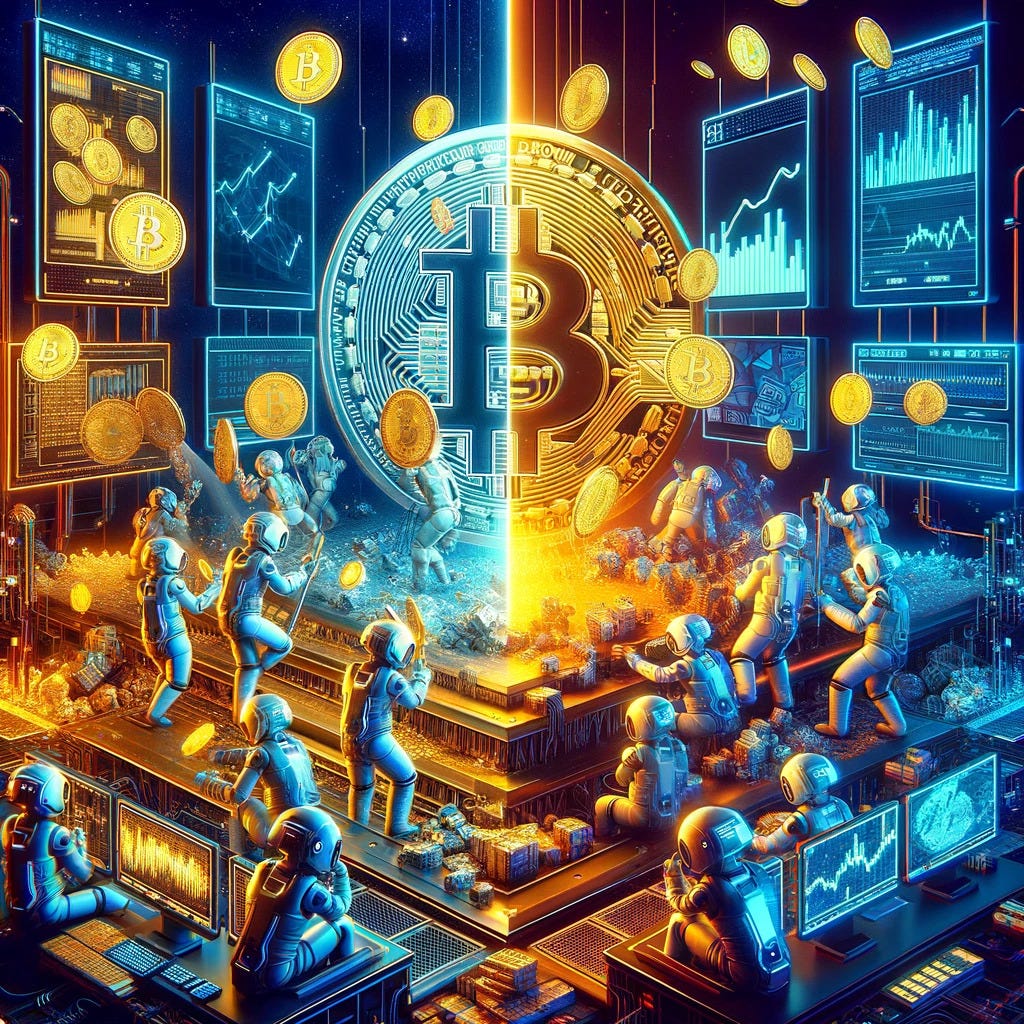Commenter Jeff asked an interesting question:
Thought experiment: What if the trajectory of policy were such that everyone—all market participants: buyers and sellers, creditors and debtors, producers and consumers—woke up one day and realized that money is worth exactly half what they thought it was worth the day before?
How would this inflation be categorized by the knowledgeable with regard to dividing up demand vs. supply effects? 100% demand-driven inflation? 50-50 demand/supply? 100% supply shock?
I imagine there should be a well-defined answer for a well-posed question?
I’m going to address this in a roundabout way, which I believe will shed light on what’s wrong with much of modern macro. I’ll begin with some thought experiments relating to currency reform events, and then discuss how these examples relate to ordinary demand shocks.
Developing countries that have previously suffered from high inflation will occasionally do a currency reform, such as exchanging 100 old pesos for 1 new peso, with the goal of making mathematical calculations easier for shoppers. It’s sort of like a stock split, but in the opposite direction. On the day these reforms are made, all nominal values immediately adjust in the same 100 to 1 ratio. Thus 100 million (old) peso bonds become 1 million (new) peso bonds. A 600 peso/hour wage contract becomes 6 peso/hour. Prices also fall by 99%. There is a sense in which this price decline might be viewed as a severe “deflation”, but almost no one views it that way. Is it actually 99% deflation?
Two reasons might be offered as to why this is not truly deflation. First, deflation means falling prices as measured in the same currency. Under a currency reform, the new peso is a different currency from the old peso. (Europe’s adoption of the euro provides another example of this phenomenon.) Second, the currency reform is in some sense “neutral”, like changing the length of a measuring stick, it doesn’t affect any real quantities.
To see which reason is the more essential, I’d like to consider a thought experiment where only one of these two objections applies, and then consider how we would view that event. To make things easier, let’s look at an inflationary currency reform, say 1 old peso for 100 new ones. And let’s make one further adjustment—the new pesos will be identical to the old pesos—the exact same money. This is tricky to accomplish, but it’s just a thought experiment and we are trying to work through what’s really going on here.
Normally, if you swapped 1 peso for 100 of the same peso, people would immediately turn around and do this over and over again. To prevent that outcome, assume that everyone exchanging money must line up at a bank or government office at 12 noon on January 1st, at which time each of their old pesos will be exchange for 100 of the exact same type of money. No double dipping. As with any other currency reform, nominal contracts such as bonds and labor agreements are automatically adjusted in the same ratio of 1 to 100. Thus as with any other currency reform, there should be absolutely no real effects, we are merely changing the length of the measuring stick.
And yet even in this case, I don’t think the public would view the event as some sort of hyperinflation, as it doesn’t have any of the real effects (on output and wealth redistribution) normally associated with hyperinflation. The effects of this action are essentially the same as a traditional currency reform where one old peso is exchange for 100 new and different pesos. And yet in a technical sense it really is hyperinflation—as we are measuring prices in the exact same currency.
The point of this thought experiment is to try to convince you that while one can cite two reasons why currency reforms are usually not view as hyper-deflation or hyperinflation, only one of the reasons is truly essential. The essential reason is that currency reforms are completely neutral, they don’t have real effects. That’s why they are viewed as non-events. After all, in a technical sense the thought experiment I just gave you really is a 100-fold increase in the price level, it really is hyperinflation, as the currency type has not changed, just the quantity of money. It is what I would call a pure nominal shock.
This thought experiment also helps us to understand why most real world nominal shocks do have real effects. In most cases, a change in the money supply or demand is not accompanied by a government fiat automatically adjusting all contracts. This real world nominal contract stickiness means that nominal shocks cause swings in real variables such as employment, output and bankruptcies, effects that would not occur in a pure currency reform with no nominal contract stickiness.
In my view, the best way to think about the business cycle is that there are a series of nominal (demand) shocks that would be completely neutral in a world of 100% contract flexibility, but end up having important real effects due to the existence of nominal contracts (plus firms being slow to adjust prices.) But that’s not how most economists look at phenomena such as inflation.
It is much more common for economists to describe inflation (a nominal process) as being caused by real shocks. Thus they might argue that a booming economy—i.e., excessively rapid growth in GDP beyond the economy’s potential—causes inflation. Or excessively low unemployment causes inflation (the Phillips Curve model.) To me, this confuses cause and effect.
Of course even in my view of causality, nominal and real variables are positively correlated over the business cycle. So does it really matter how we view causation?
Here’s why I believe it does matter. A few months back I recall seeing people argue that inflation wasn’t being caused by demand side factors, because “demand” wasn’t even back to the pre-Covid trend line. I use scare quotes for demand, as they were not defining demand as nominal spending (which would be appropriate), but rather as real spending, which is wildly inappropriate.
If the natural rate of output were 100% knowable in real time, the two approaches would end up giving similar answers. But let’s say that the natural rate of output moves around in hard to forecast ways. For instance, suppose that Covid depressed the natural rate of output in 2022 by 2%, by reducing labor force growth (sharply lower immigration, people with long Covid, people fearful of getting Covid, etc.) In that case, if RGDP were to return to 1% below the pre-Covid trend line, it would actually be 1% above the (depressed) natural rate of output. An economy that looked “depressed” would actually be overheated.
I want pull my hair out when I see economists define “demand” as real output. That’s an EC101 error. Real output is a quantity, it’s just as much “supply” as it is demand. In fact, it is neither demand nor supply, it is quantity demanded and quantity supplied. The appropriate way to measure aggregate demand is to look at nominal spending—NGDP. And NGDP was far above trend in 2022. Any shortfall of RGDP was not due to weak demand, it was due to capacity constraints induced by the Covid shock.
The same mistake occurs when people argue that low unemployment (a real variable) causes inflation. Unemployment is a real variable, whereas demand is a nominal variable. It makes more sense to say that positive nominal shocks (more money demand supply or less supply demand) causes low unemployment due to sticky wages. And because the natural rate of unemployment is hard to estimate, Phillips curve models of inflation are not reliable. You need to focus on NGDP.
The same mistake occurs when economists argue that low real interest rates are an easy money policy. The natural real interest rate moves around a great deal. The Fed often finds itself in a situation where it is raising rates but money is getting easier (the 1960s and 1970s) or it is cutting rates but money is getting tighter (the 1930s, 2008.) To ascertain the stance of monetary policy, you need to look at . . . you guessed it . . . NGDP.
So while many economists would scoff at Jeff’s suggestion that a sudden and neutral 2 for 1 change in the price level is a “demand shock”, because they don’t see any change in real demand, I believe Jeff is exactly right. It’s an unusual demand shock, as it seems to posit a smooth adjustment because everyone has 100% rational expectations and there is no discussion of sticky prices, but it’s still a 100% increase in the price level, and 100% increase in NGDP.
When doing macro, don’t start with changes in real variables. Start with the nominal shocks, such as the change in NGDP. Then derive the real effects, which will be greater in an economy with lots of wage stickiness (1930 and 2009) and smaller but still quite meaningful in economies with less wage stickiness (1921.) All economies have some stickiness, except in the unusual case of a pure currency reform.
A currency reform is like a lab experiment, showing us what nominal shocks would look like in a world without any nominal contract stickiness. They help us to understand why we do see real effects in the real world. But the real effects (on RGDP or employment) are not the ultimate cause of the business cycle, they are an effect produced by nominal shocks in a world with wage/price stickiness.















